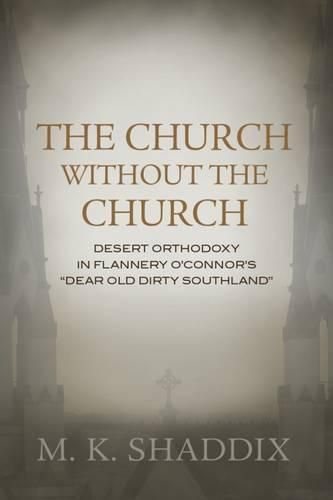Readings Newsletter
Become a Readings Member to make your shopping experience even easier.
Sign in or sign up for free!
You’re not far away from qualifying for FREE standard shipping within Australia
You’ve qualified for FREE standard shipping within Australia
The cart is loading…






In the fifty years since her death, Flannery O'Connor studies have been conventionally delimited to two critical parameters: the South and the Church of Rome.
This work challenges the conception of O'Connor as inherent to a monolithic South and to orthodox Roman Catholicism by problematizing the Southern Gothic trope, positing a non-canonical Southern realism, and repositioning O'Connor as essentially ecumenical in her private theology. The study contextualizes O'Connor’s work within the American scene by detailing the varied political and literary histories of the North and South as well as opposing the notion of region-specific aesthetics and a native anti-realist mode in the South.
The text also contests the body of scholarship that attempts to explain O'Connor’s work in terms of Roman orthodoxy. Shaddix gives evidence to the contrary that the author, though a practicing Roman, was attentive to and sympathetic of the interlinking traditions in Judaism and Christianity as well as the prophetic mysticism of the Desert Fathers and Southern Evangelicals. Furthermore the study demonstrates the interconnectedness of O'Connor’s continually evolving spiritual and critical thinking with her process of story writing and personal correspondence.
The result of Shaddix’s work is an insightful and penetrating analysis and reading of O'Connor and her Christ-Haunted South.
$9.00 standard shipping within Australia
FREE standard shipping within Australia for orders over $100.00
Express & International shipping calculated at checkout
In the fifty years since her death, Flannery O'Connor studies have been conventionally delimited to two critical parameters: the South and the Church of Rome.
This work challenges the conception of O'Connor as inherent to a monolithic South and to orthodox Roman Catholicism by problematizing the Southern Gothic trope, positing a non-canonical Southern realism, and repositioning O'Connor as essentially ecumenical in her private theology. The study contextualizes O'Connor’s work within the American scene by detailing the varied political and literary histories of the North and South as well as opposing the notion of region-specific aesthetics and a native anti-realist mode in the South.
The text also contests the body of scholarship that attempts to explain O'Connor’s work in terms of Roman orthodoxy. Shaddix gives evidence to the contrary that the author, though a practicing Roman, was attentive to and sympathetic of the interlinking traditions in Judaism and Christianity as well as the prophetic mysticism of the Desert Fathers and Southern Evangelicals. Furthermore the study demonstrates the interconnectedness of O'Connor’s continually evolving spiritual and critical thinking with her process of story writing and personal correspondence.
The result of Shaddix’s work is an insightful and penetrating analysis and reading of O'Connor and her Christ-Haunted South.